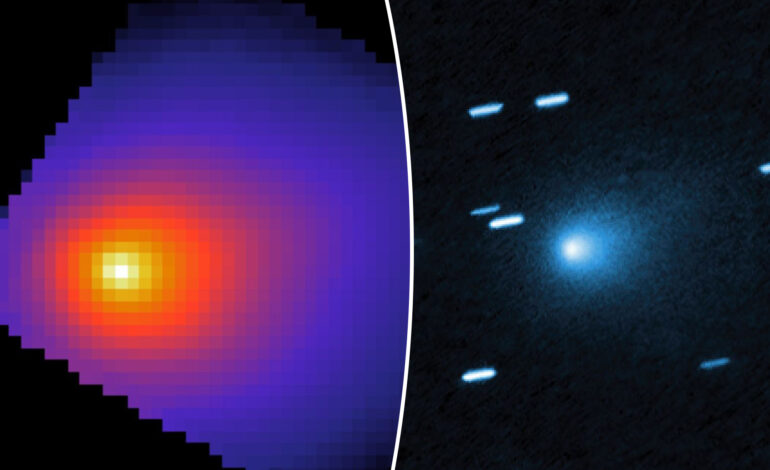NASA Launches Emergency Probe for Mysterious Interstellar Object

NASA’s International Asteroid Warning Network (IAWN) has initiated an emergency probe to investigate the unusual behavior of an interstellar object designated as 3I/ATLAS. This Manhattan-sized entity, which was discovered in July 2023, has raised significant concerns among scientists due to its unexpected characteristics. Harvard astrophysicist Avi Loeb suggests that 3I/ATLAS could represent a “black swan event,” a term used to describe unpredictable occurrences with severe consequences.
Loeb, who has been vocal about the potential extraterrestrial origins of 3I/ATLAS, noted that the object might weigh around 33 billion tons, making it at least a thousand times more massive than previous interstellar objects. He stated, “The question is, why is such a giant object delivered to our inner solar system, when we saw only small ones before?” This anomaly has prompted calls for a comprehensive defense strategy to mitigate any potential risks associated with the object.
The IAWN plans to conduct a “comet campaign” from November 27, 2025, through January 27, 2026, aimed at refining tracking methods to determine the precise location of 3I/ATLAS. This campaign comes in response to the object’s peculiar behaviors, which challenge established comet behavior norms and hint at an extraterrestrial origin.
Among the troubling features noted is an anti-tail—an unusual jet of particles that diverges towards the Sun rather than away from it, which is standard for comets. Furthermore, the object has been emitting a plume of four grams of nickel per second, with no evidence of iron present. Dr. Avi Loeb explained that this specific alloy, nickel tetracarbonyl, has only been observed in human manufacturing processes.
Concerns have also been raised regarding 3I/ATLAS’s non-gravitational acceleration and its trajectory, which brings it near significant celestial bodies such as Jupiter, Venus, and Mars. In a paper published in July, Loeb speculated that these factors could indicate the object is an alien probe deployed for reconnaissance purposes, potentially with hostile intentions. “The hypothesis in question is that [3I/ATLAS] is a technological artifact, and furthermore has active intelligence,” he noted.
Despite the alarm raised by some scientists, NASA maintains that 3I/ATLAS does not pose a direct threat to Earth. Nevertheless, the IAWN’s monitoring efforts are crucial, especially as the object approaches the Sun. Loeb suggests that if 3I/ATLAS serves as a massive spacecraft utilizing solar gravity to alter its trajectory, it may soon exit the Solar System.
The scientific community is urged to remain vigilant as 3I/ATLAS nears its closest approach to the Sun. Loeb’s insights and the IAWN’s proactive measures highlight the need for continued observation and preparedness regarding this extraordinary interstellar object. The implications of 3I/ATLAS stretch far beyond mere scientific curiosity; they could redefine humanity’s understanding of our place in the cosmos.






